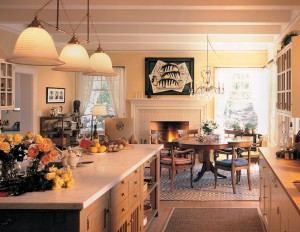
I am speaking at an architectural conference in Charleston. The participants are architects who design custom houses, and many of the presentations highlght the difference between traditional and modern design, since so many custom houses fall into the first category. At one point, a member of the audience (somewhat impatiently) points out that if this were a meeting of fashion designers, or industrial designers, the distinction would not arise; the implication is that we would be discussing only “the latest thing.” Of course, I thought to myself, that’s because fashion and consumer products are so fleeting. There is no tradition of the laptop; when a new model come along, the old model is out of date, soon obsolete, finally discarded. The cars of our youth are long gone. What our grandparents were wearing a century ago is of no concern except to historians, it is what people are wearing today that interests us. But houses have a useful life that is measured in centuries. Old houses are a part of the present. This means that domestic traditions change slowly. The symbolic hearth goes back to the Middle Ages; Americans have built porches of one kind or another ever since Mount Vernon; the front door has been a potent symbol for a long time. Old houses are cherished, so little wonder that for many people, building one’s house means participating in—and adding to—a long tradition.
